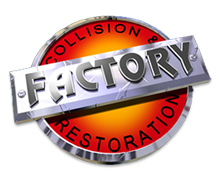Introduction to Collision Damage
When your vehicle has been in an accident and you take it to the repair shop, your repair technicians have a system for inspecting it for damage. While the system can vary a little depending on the shop you go to and the car you drive, there are a few specific things that collision repair technicians always check for.
Understanding how a technician inspects your vehicle for safety and functionality can help you understand the estimating and repair process.
Inspect Obvious Damage
If there is obviously major damage to the vehicle, the repair technicians will start there. Vehicles are designed to protect the driver and passengers and the most vital parts of the car, like the engine.
When an impact occurs, the damage follows a specific path. When an inspector looks at the car to estimate the cost of repairing it, they should follow a path called ‘the flow of damage.’ Depending on the force of the impact, the damage may be more or less extensive, but it should follow a specific path.
Inspect the Fenders & Bumpers
Fenders and bumpers (as we mentioned in last week’s post) are usually the first parts of the car to be damaged. Their main purpose is to absorb the damage caused by a collision, especially a minor collision.
Usually, collision repair technicians check for four types of damage: dents, scratches, breaks, and scratches. These can easily be seen from the outside of the vehicle, but extensive damage behind the bumper may take more time to find.
Inspect the Windshield
Cracks and chips in the windshield may seem like minor issues, but the windshield plays an important role in protecting the passengers in the vehicle, and in providing support. A good repair technician will inspect the windshield for damage, and recommend repairs or replacement.
Inspect the Door Panels
A minor crash from the side is likely to affect the door panels. While the door panels are also designed to absorb the impact of a crash, they are more functional than bumpers and fenders, and sometimes a repair is essential for the safety and functionality of the vehicle.
A collision repair technician will check for gaps, misalignments, and uneven panels. Gaps and small dents might be okay to leave alone if you don’t want them repaired, but severe dents and misalignments can be dangerous.

Recent Comments